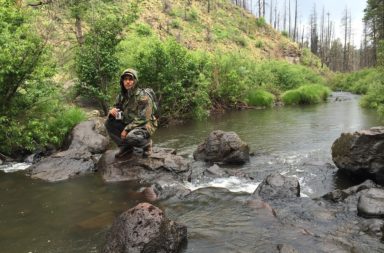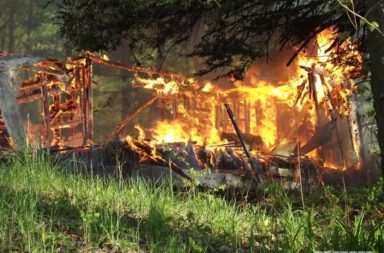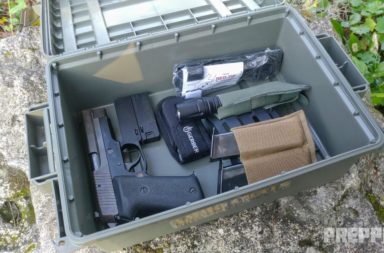When searching for the right piece of land to build a prepper retreat, location matters, price matters, water matters, dirt matters, and terrain matters – not aesthetic beauty. Now, I think our 56-acre survival homesteading retreat is heaven on earth, but it could have been as ugly as homemade sin as long as the five important factors noted above, had been met.
A typical real estate agent will have little to no clue what a prepper is looking for in a piece of land – that is if the client is even comfortable enough with the agent to reveal their self-reliant nature.
So, because of OPSEC reasons andor the lack of survival knowledge by the real estate agent, you will likely be left to your own devices to find the right piece of land to build to retrofit into a fully-functional and sustainable survival retreat.
While still actively working as a real estate agent, I was shocked one morning when a person from another state called the office and sheepishly tried to explain his wants and needs for a patch of land in my rural county.
A few moments into the conversation I asked, “Sir, do you happen to be a prepper?”
There was an awkward pause on the other end of the line and then he replied, “I am looking for a place my family can be safe from TEOTWAWKI after a WROL scenario occurs.”
Ah, a test to see if I knew the prepper lingo. I did. The guy was pleased then and ecstatic later once I found him a survival retreat property that met all five of the most important factors in spades…on the cheap.
I spent my commission on long-term survival food.
The chances of you reaching a person like me on the other end of the line when calling a real estate office or help finding a prepper retreat. That is why I wrote this guide. As one of my prepping mentors, Survival Jane, always says, “we’re all in this together.”
Remember, all land is surely not created equal. Even if a piece of property is currently being used for agriculture or homesteading purposes, that does not guarantee the acreage will be adequate to meet your survival needs.
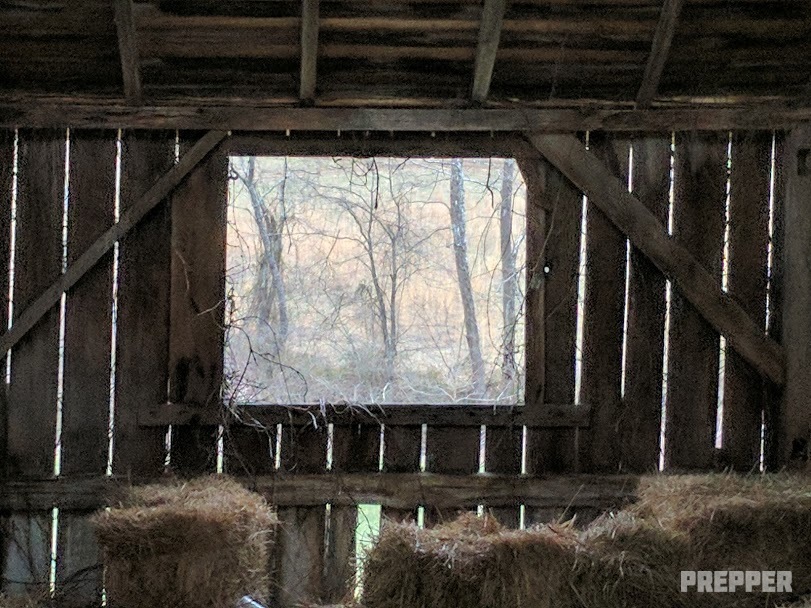
Location
Seclusion is essential. You want the property on the far back end of nowhere, preferably on a dead end road. Not only does the land need to secluded, so does the home, barn, and outbuildings. Our house is located way up a winding dirt and gravel driveway that is a half mile from the road. Finding a place like took us almost three years.
Even if you do not have that much time to commit to a search, make sure you located land at least 60 miles from a major city and is not located within 20 miles of a highway, or near a state route. Secluding yourself from high traffic areas will at deter the chances of marauding hordes converging onto your property.
Terrain
The layout of your land will play an enormous part in how easy (or how difficult) it will be to defend. If you cannot defend your land during a SHTF event, it will not be your land much longer. There is one way in and one way out by any type of vehicle or horse to our land. Getting to it except from the driveway on foot, will require at least an hour (in decent weather with daylight) and will require a lot of exertion, physical strength, and determination by the wannabe invaders.
We have covert LP/OPs set up with a clear view of driveway at crucial intervals and can create a bottleneck shooting gallery at the creek which must be crossed about five truck lengths into our roadway. The property should be partially to half wooded. The forest areas of your land will provide you with not only valuable hunting opportunities, but also firewood to heat your home and cook with during the long-term disaster.
Never rely on hunting as your sole source of protein. Legal hunting seasons will no longer be observed during the apocalypse, so wild game will become overly taxed – expect the unprepared who also possess no morals, to be lurking in the woods to kill you and take the deer you tracked and shot.
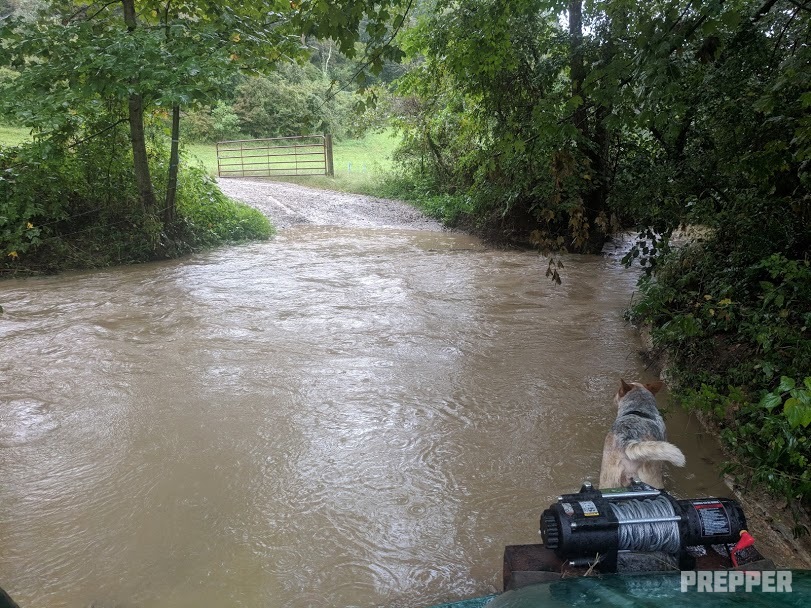
Water
One of the first rules of prepping is redundancy. Relying on city or village water is not a good idea. During a long-term disaster, or even a short-term regional natural disaster, public utilities shouldn’t be counted upon to remain functional. An underground well would be a far superior option for everyday and SHTF water service to the home. Unfortunately, most wells functions on electricity, so you will need an off grid power source to make it pump to full capacity or a manual pump or dipper to retrieve water.
Any survival retreat property you are considering must have at least one secondary water source: creek, pond, natural spring, area suited for digging a pond, or living lakeside – which could reduce location seclusion, depending upon the region. A moving waterway could be harnessed for off grid hydropower to create an alternative energy system for your survival retreat.
Soil
No matter how pretty a piece of land looks, do not assume what is located under your feet will be as attractive. Quality soil, or the time, money, and skills to improve poor soil, is a life and death matter when it comes to prepper retreat attributes. If nothing will grow in your dirt, you will starve…it’s just that simple.
Sure, you can buy dirt and grow in containers now, but the local Walmart will have its shelves emptied just a few hours into a disaster. Even if the unprepared do not think to buy or steal bags or potting soil, traveling to the store just will not be a safe option. The whole goal of cultivating a survival retreat is to find a safe haven for your family to ride out the apocalypse, negating the risky proposition of leaving to meet any need.
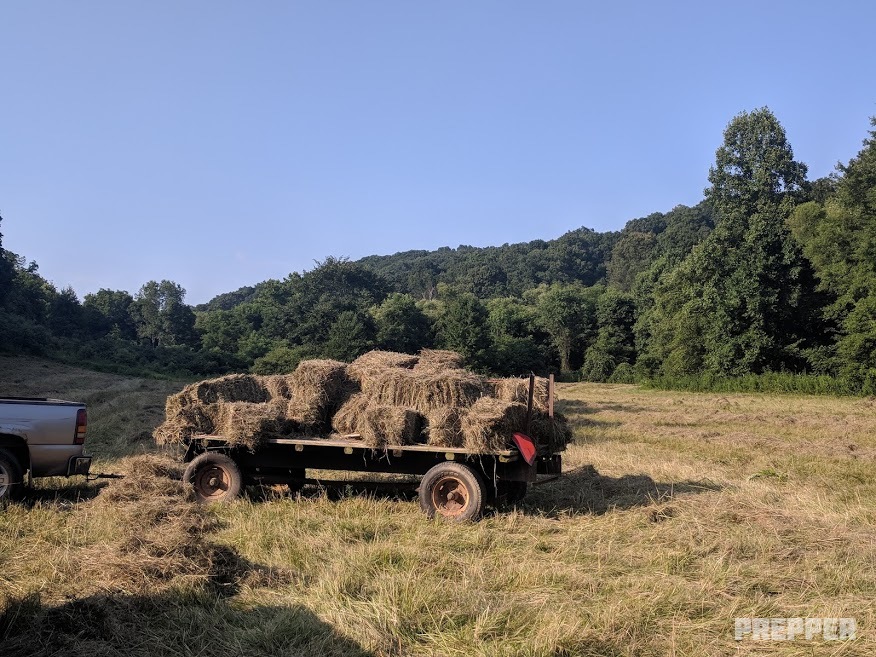
Pasture and Hay Fields
If you are going to raise medium or large livestock of any type, you must be able to feed them. Horses will surely become the primary mode of transportation after a long-term disaster sends us back to an 1800s existence. Even if the SHTF event is not power grid related, prep as if all modern amenities will no longer exist – because eventually they will not. Horses and cows need pasture to eat during the warm months of the year.
Goats, sheep, and hogs can maintain a healthy diet on the brush and lower quality grass in an around your survival homesteading retreat. But, both large livestock and the animals noted above will need hay to varying degrees over the winter months. Pasture and hay fields are not the same thing. Sure, horses and cows would be happy to chow down in a hay field, that is where the best grass resides and the ground is all nice and flat and easy to traverse.
If you plan to stockpile hay to get you through at least one winter, purchase round bales because they can be stored outdoors without becoming destroyed by mildew. Cows and other ruminants, like goats, can eat a lower quality hay than horses, who will become gravely ill or die painfully if they are so hungry they consume mildewed hay.
Part 2 of the Ultimate Guide To Buying Survival Retreat Land focuses on agricultural and large acre loans and grants to help you afford your new prepper compound or bugout location.
Part 3 of the Ultimate Guide to Buying Survival Retreat Land offers tips to help you learn how to work from your stronghold and/or make extra money for preps from the natural bounty offered up by the land – and we are not just talking crops here, fellow preppers.
